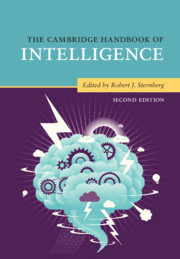Book contents
- The Cambridge Handbook of Intelligence
- The Cambridge Handbook of Intelligence
- Copyright page
- Dedication
- Contents
- Figures
- Tables
- Contributors
- Preface
- Part I Intelligence and Its Measurement
- Part II Development of Intelligence
- Part III Intelligence and Group Differences
- Part IV Biology of Intelligence
- Part V Intelligence and Information Processing
- Part VI Kinds of Intelligence
- 27 The Theory of Multiple Intelligences
- 28 The Augmented Theory of Successful Intelligence
- 29 Emotional Intelligence
- 30 Practical Intelligence
- 31 Social Intelligence
- 32 Collective Intelligence
- 33 Leadership Intelligence
- 34 Cultural Intelligence
- 35 Mating Intelligence
- 36 Consumer and Marketer Intelligence
- Part VII Intelligence and Its Role in Society
- Part VIII Intelligence and Allied Constructs
- Part IX Folk Conceptions of Intelligence
- Part X Conclusion
- Author Index
- Subject Index
- References
30 - Practical Intelligence
from Part VI - Kinds of Intelligence
Published online by Cambridge University Press: 13 December 2019
- The Cambridge Handbook of Intelligence
- The Cambridge Handbook of Intelligence
- Copyright page
- Dedication
- Contents
- Figures
- Tables
- Contributors
- Preface
- Part I Intelligence and Its Measurement
- Part II Development of Intelligence
- Part III Intelligence and Group Differences
- Part IV Biology of Intelligence
- Part V Intelligence and Information Processing
- Part VI Kinds of Intelligence
- 27 The Theory of Multiple Intelligences
- 28 The Augmented Theory of Successful Intelligence
- 29 Emotional Intelligence
- 30 Practical Intelligence
- 31 Social Intelligence
- 32 Collective Intelligence
- 33 Leadership Intelligence
- 34 Cultural Intelligence
- 35 Mating Intelligence
- 36 Consumer and Marketer Intelligence
- Part VII Intelligence and Its Role in Society
- Part VIII Intelligence and Allied Constructs
- Part IX Folk Conceptions of Intelligence
- Part X Conclusion
- Author Index
- Subject Index
- References
Summary
Practical intelligence has been referred to as “street smarts” or “common sense” and is typically contrasted with “book smarts” or general academic intelligence. The concept emerged from a recognition that success with solving abstract, academic problems did not necessarily translate to success with solving real-world, practical problems, and vice versa. This chapter reviews research aimed at better understanding the cognitive underpinnings of practical intelligence, its distinctiveness from general intelligence, and its relationship to performance. Particular attention is given to research on tacit knowledge, or the unspoken, practical know-how that often differentiates expert from novice performance. Tacit knowledge has been found to be related to successful performance in domains as diverse as sales, primary education, college admissions, military leadership, information technology, and policing. The chapter concludes with promising directions for future research on the acquisition and dissemination of tacit knowledge as a means of enhancing the development of practical intelligence.
Keywords
- Type
- Chapter
- Information
- The Cambridge Handbook of Intelligence , pp. 736 - 755Publisher: Cambridge University PressPrint publication year: 2020
References
- 3
- Cited by

